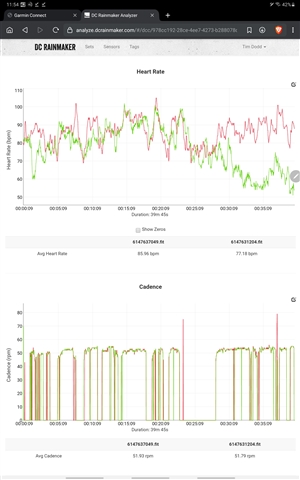I signed up specifically to make this post, thats the level of my annoyance at this point.
First, some history of my time with Garmin. I have been a Garmin Fenix user since the 3 series, always buying the top end version. I had to do 2 warranty claims on the 3 series until I got one that worked. I then got a 5x Plus which crapped out on me last week just out of warranty. Garmin gave me a consolation prize of 20% off a new model. I went with the Garmin Tactix Delta which is basically a Garmin Fenix 6 with additional bells and whistles. I also use a Garmin Inreach mini.
On to the HR. The HR on Garmin has always been pretty poor, but I bought into the excuse Garmin always had that it was a limitation of the tech. My Fenix 5 would always top out between 110 and 120 regardless of what I was doing. But at least it gave me a good calorie estimate based on daily activeness when not doing a workout. Based on things I read, I had hopes that the fenix 6 series would improve this a bit. Wrong. So..So...Wrong. After several days with the 6 (tactix), I noticed that my HR had not been tagged above 100 for anything, very odd compared to my 5. So then I started testing, purposely getting my HR up and then sitting still to see if it would rise. Nothing...would not go above 90. I even shaved the hair on my arm where the watch sits and tried it at different pressures above my wrist. Well- since I cant get crap for my fenix 5 I still have it and the HR function is still working. I repeated the same procedure with the fenix 5 on and it topped out around 118. Consistent with what I have seen in the past. At this point I remember that my wife has a new apple watch. So I slap a pink watch on my wrist and redo the exercise...150bpm. And before I'm accused of being an apple fanboy, I dont own a single apple device. Windows and Android.
So now I have proved to myself that a $1400 (yes, I got the ballistics version) watch cant do the basic thing that most of the calculations of the watch are based on without a HR strap. Just think about it. All the advertised constant metrics ..stress, sleep, etc....are most likely off. Unless it is accurate below its limit. But who knows at this point. Unless you have a HR strap on there's no way to tell. ANNND Garmin has been hiding behind the "limited technology excuse" but that has now fallen apart as someone else has accurate heart rate tech out there. At this point, Ive spent almost $3k on garmin watches and it's always started or ended with disappointment.



